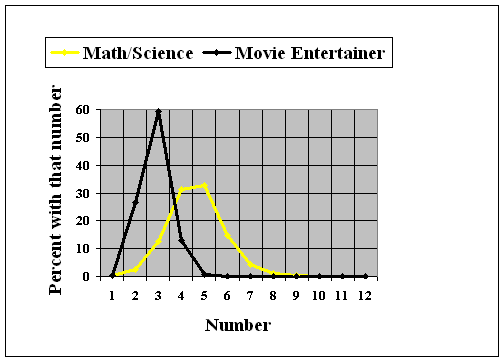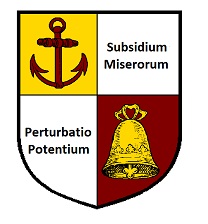My Erdös Number is Five
|
||||||||||||||
|
Who was Paul Erdös? |
|
|||||||||||||
|
Mathematicians in general have fewer links and lower numbers. But physicists can play too! If you are an experimentalist, the approach is to link first to a theorist, and thence to a mathematician. It can get very tricky. On my first attempt, I built an extremely convoluted path that yielded a number of 8, starting with my colleague Pierre Extermann:
With some additional research using Google Scholar, I was able to reduce this to 5. We traded Feynman for Ypsilantis, and shorted the path by three links. Here is the documentation trail of the links. Ronald Mermod (one of my two thesis advisors) and Tom Ypsilantis are/were experimental physicists. Nicholas ("Nick") Metropolis was generalist who did some of the earliest work on the Monte Carlo method; today you would call him a mathematical physicist. He is the crossover to the world of the mathematicians. From there it is two brief steps via Stanislauw ("Stan") Ulam, who was also very definitely a generalist with eclectic tastes. For the curious, my other thesis advisor was René Turlay, who collaborated with Fitch and Cronin in the discovery of CP-violation in K-meson decays. Even though Fitch and Cronin later won the Nobel Prize, I could not link to Erdös through them. I also tried Pierre Piroué, but that didn't help either. Nor did Paul Kunz. |
Erdös has a Marasco Number of 5 |
|||||||||||||
|
Link 1: |
These were the first two papers I ever published, working in the University of Geneva/Saclay collaboration at CERN in the late sixties and early seventies, led by Ronald Mermod (Switzerland) and René Turlay (France):
Measurement of Ke4+ - decay
rates and test of the ΔS = ΔQ rule Determination of the low-energy
For a full list of my publications, click here. |
|||||||||||||
|
The first Greek, Ypsilantis, gets into the act!
Experiments on Antiprotons: Antiproton-Nucleon Cross Sections O. Chamberlain, D. V. Keller, R. Mermod,
E. Segrč, H. M. Steiner, and T. Ypsilantis
|
Link 2: Mermod and Ypsilantis |
|||||||||||||
|
Link 3: Ypsilantis and Metropolis |
Metropolis provides even more Greek influence. But, hey, that's where Superman lived!
Phase-Shift Analysis of 310-Mev Proton-Proton Scattering Experiments H. P. Stapp and
T. J. Ypsilantis
|
|||||||||||||
|
Ulam was Polish-American. Nick and Stan published three times together. Here are the citations from Google Scholar: [CITATION] The Monte Carlo method In an amazing coincidence, this article was used by me in 1966 as the basis for a Monte Carlo simulation performed on an IBM 1620 for a senior thesis in Chemical Engineering at The Cooper Union. Another paper, also co-authored by Metropolis, was also instrumental. The resulting paper placed second in a regional AIChE contest, but was never published. [CITATION] A Property of Randomness of an Arithmetical
Function [CITATION] On certain sequences of integers defined by
sieves |
Link 4: Metropolis and Ulam |
|||||||||||||
|
Link 5: |
Ulam and Erdös were great friends, and the Erdös Number site claims they published jointly 3 times. Below is the only citation I could find. I've always wondered what language they spoke when they collaborated. Here is the final link in the chain: Minimal decompositions of two graphs into pairwise isomorphic subgraphs Proceedings of the 10th Southeastern Conf. on Comb., Graph Theory and Computing (1979), 3-18 F.R.K. Chung, P. Erdös, R. L. Graham, S. M. Ulam and F. F. Yao [CITATION] Minimal decompositions of two graphs
into pairwise isomorphic subgraphs Just to show what a small world this is, Chung and Graham did the graph theory solution of the Stomachion problem in 2003, a problem with which I had a certain involvement. |
|||||||||||||
|
The following information is taken from
John Walker's web
page. John also has an Erdös Number
of 5.
"According to Erdös Number Facts, approximately 268,000 people are known to have finite Erdös numbers. Among these, 5 is both the median (value with the closest to equal numbers above and below) and the mode (most common value), with 87,760 people having number 5. Here are some well-known names with Erdös number 5 from Some Famous People with Finite Erdös Numbers.
Note that in most cases Erdös numbers are an upper bound. Particularly for people with higher numbers, there's always the possibility an obscure publication or unexplored path will reduce their numbers. An individual's number may decrease if any of the authors in their path publishes a paper with anybody whose number is less than their previous predecessor, or if a new shorter path is created when an individual's Erdös number is reduced."
It is somewhat interesting to compare Erdös Numbers to Bacon Numbers. In the latter case, low numbers are quite common, and the game consists of finding obscure people with high numbers. In the former, the objective is to minimize your number. A comparison of the two distributions is revealing:
|
More about Erdös Numbers |
|||||||||||||
|
Click here to e-mail Barbecue Joe on the subject of Erdös Numbers |
||||||||||||||


